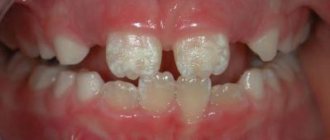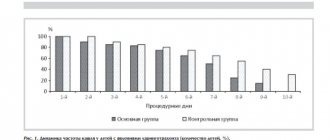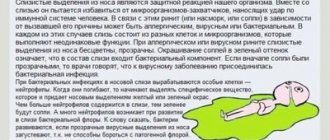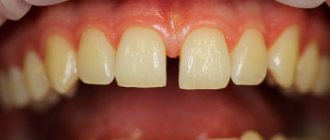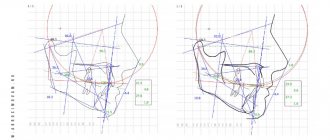Causes of viral and bacterial runny nose
Rhinitis is most often caused by viral and bacterial infections that cause respiratory diseases.
The vast majority of rhinitis, about 90% of the total, are viral in nature. The causative agents of colds are different types of influenza and parainfluenza viruses, adeno- and rhinoviruses.
Viruses are quite active during the cold season - autumn and winter. However, you can “catch” the infection in a situation where there is a carrier nearby, since it is transmitted by airborne droplets. The development of a viral runny nose is facilitated by reduced immunity.
The cause of a bacterial runny nose is the activation of opportunistic microflora, which, when multiplied, causes inflammation of the nasal mucosa. The causative agents of the pathology can be staphylococci and streptococci, pneumococci and other microbes.
In this case, the impetus for the development of bacterial rhinitis is also in most cases a viral infection. The virus penetrates cells and causes a pathological process, against the background of which immunity decreases and the body becomes more vulnerable to pathogenic microbes. In some cases, a bacterial infection is primary, and rhinitis occurs without the participation of viruses.
The development of bacterial rhinitis is promoted by:
- chronic respiratory diseases;
- congenital or acquired anomalies of the structure of the nose;
- severe systemic diseases;
- smoking, working in unfavorable working conditions (dust, chemical fumes).
Rhinorrhea during teething: causes
Baby teeth usually appear in babies at the age of 5-9 months, while the process of teething can begin much earlier - from 3-4 months. The gradual eruption of dental crowns is always accompanied by spontaneous opening of the gums.
Baby teething
This process is quite painful and gives the child a lot of unpleasant sensations and discomfort, so most children during this period become whiny, restless, and capricious. At the same time, almost 60% of infants experience another symptom that is considered characteristic of the eruption of baby teeth in the first year of life - a runny nose.
Teething is often accompanied by a runny nose
There are several reasons that can provoke the appearance of rhinorrhea during teething.
The process and timing of teething depend not only on inherited genetic parameters; the timing of teething can be influenced by external and internal factors. For example, climatic conditions, the course of pregnancy and the nature of nutrition of the mother and child after birth, illnesses of the baby, and more. Read more about the teething schedule for infants on our website.
Reduced immunoresistance
Weakening of immune function during the eruption of dental crowns is a natural reaction of the body to an internal factor that is a mediator of stress. Dentists note that most often, a pronounced immune disorder during this period is observed in children whose teeth appear too early (before 4 months), or, conversely, too late (after 10 months). The risk of a viral or bacterial infection is higher if the following factors are present:
- insufficient hygiene of the baby’s hands and skin;
- poor processing of children's bedding and underwear, toys, feeding utensils, pacifiers;
- irregular wet cleaning in the apartment (especially in the children's room);
- non-compliance with standards for ventilation and humidification of rooms in which the child spends most of his time;
- frequent appearance in crowded places.
Oral hygiene in children
If a child begins to teethe, contact with strangers or people who have recently had a respiratory disease should be temporarily prevented, since the risk of infection during this period is quite high for all children.
While your child is teething, it is worth protecting him as much as possible from possible airborne infections.
Note! Compliance with increased preventive measures during teething is recommended for children suffering from congenital autoimmune diseases (cystic fibrosis, agranulocytosis, diabetes mellitus, etc.).
Strengthening secretory function
A natural protective mechanism during teething is to increase the activity of secretory glands that produce salivary and muconasal secretions. Rhinorrhea is observed mainly in infants with manifestations of hypersalivation (increased salivation), since anatomically the nasopharynx and oropharynx have a similar structure and are located in close proximity to each other.
A runny nose usually bothers babies with increased salivation.
In this case, muconasal mucus is produced by surface epithelial cells located in the mucous membranes of the nose. The secretion contains not only water, mucus and epithelial particles, but also mucin - gel-like high molecular weight mucoproteins that contain a large amount of acidic polysaccharides. If the secretory glands work too actively, the amount of mucus secreted increases several times, which leads to its removal from the nasal cavity through the anatomical openings - the nostrils. In some cases, such snot can flow into the throat along the back wall of the pharynx, causing a cough, which many parents perceive as a symptom of a respiratory infection.
- How to deal with unpleasant odors in the home of a seriously ill person
Coughing may be normal during teething
Stimulation of blood circulation
During teething, the flow of blood and lymph to the vessels located in the oral cavity increases. Increased blood and lymph circulation also occurs in the vessels of the nasal cavity, which has a stimulating effect on the secretory glands and causes increased secretion of muconasal mucus, which is commonly called snot.
Clinical features
“Dental” rhinitis” (“dental runny nose”), which is a type of physiological runny nose, must be distinguished from pathological rhinitis, which can be infectious, allergic and neurovegetative in nature. The physiological secretion of nasal mucus against the background of changes occurring in the child’s body during the period of teething crowns has certain clinical features that need to be paid attention to. Such a runny nose is not accompanied by an increase in temperature, the release of thick yellow, brown or green snot, or the appearance of allergic reactions in the form of a rash or itchy skin.
If the baby has snot and saliva, but there is no fever, it means that another baby tooth will appear soon.
In this case, a dental runny nose may well occur against the background of a slight change in stool due to increased secretion of the salivary glands and the ingestion of a large amount of saliva, which mixes with food and dilutes its consistency. A deterioration in general well-being is also possible, since the process of teeth appearing is quite painful and unpleasant for the child. Physiological rhinitis may also be accompanied by other pathological symptoms, for example, cough, sleep disturbance or refusal to eat, but only a doctor can establish their relationship with the possible presence of infectious pathogens in the body.
Your baby may be fussy and have trouble sleeping during teething.
How are the symptoms different?
Symptoms will help determine whether it is a viral or bacterial runny nose. Signs of the bacterial nature of the disease are:
- thick discharge from the nose of a yellow or yellow-green color, often with an unpleasant odor and impurities of pus;
- impaired nasal breathing due to the accumulation of thick secretions;
- increase in body temperature to 38-40 C;
- headache, muscle pain, chills.
With the right treatment, bacterial rhinitis goes away in 7-10 days.
Viral rhinitis also has its own characteristic symptoms:
- nasal discharge is abundant, colorless and odorless;
- the temperature is normal or slightly elevated;
- sneezing, sore throat, redness of the mucous membranes of the eyes and watery eyes.
As a rule, the disease resolves within 5 days.
The differences between viral and bacterial rhinitis in children and adults are the same. At the same time, a child suffers a runny nose, regardless of its nature, more severely than adults. This is especially true for infants who are breastfed. Due to impaired nasal breathing, it is more difficult for them to latch onto the breast, which can cause digestive disorders.
How to figure out what kind of runny nose you have
The first distinguishing feature is the color of the snot. If a green or green-yellow tint appears, it means that the nature of the runny nose is most likely bacterial. However, to determine whether a runny nose is viral or bacterial, you need to pay attention not only to the color of nasal discharge, but also to other symptoms.
If a person’s health worsens, the temperature rises to high levels, the disease continues to progress and does not go away after 10 days or more, it is necessary to consult a doctor. The specialist will prescribe a general blood test, rhinoscopy, and laboratory testing of a smear from the nasal canals.
When should you consult a doctor?
Of course, when your baby starts teething, it's best to take him to the pediatrician to make sure that the symptoms of this condition are not the first signs of a cold.
If necessary, a specialist will help you choose a drug in the form of a gel to lubricate swollen and painful gums.
Reasons to immediately consult a doctor are:
- an increase in the child’s body temperature to 38.5 degrees;
- lethargy, drowsiness and increasing weakness in the child;
- diarrhea with mucus and undigested food;
- vomit;
- dry cough;
- nasal congestion and thick yellow or green mucus.
Remember that when a child’s teeth grow rapidly, the immune system weakens, and the body is sometimes unable to resist infection. In order to avoid possible complications in your baby, do not blame any snot or cough on your teeth.
Doctor Komarovsky about runny nose and teeth
Teething. Teeth are being cut and the temperature has risen: what to do? | Question for the doctor

